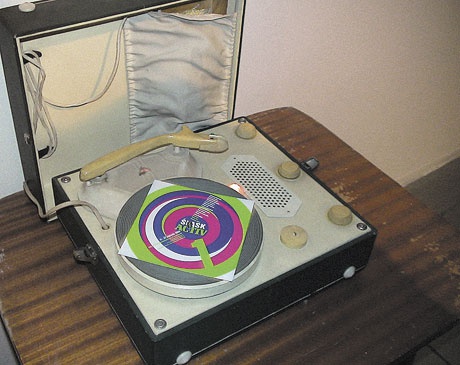Śląsk active (1) — ma właściwości energetycznego napoju o podobnej nazwie

Śląsk Active 1 — Artyści:
Katarzyna Bochenek, Sławek Brzoska, Marek Glinkowski, Małgorzata Jabłońska i Piotr Szewczyk, Ksawery Kaliski, Wojtek Kucharczyk, Marek Kuś, Leszek Lewandowski, Piotr Lutyński, Krzysztof Morcinek, Anna Nałęcka, Krystyna Pasterczyk, Wjosna, Jerzy Ziomber.
Pomysłodawca cyklu: Marek Kuś
Kuratorzy: Marek Kuś, Stach Ruksza

podsumowanie cyklu wystaw „Śląsk active” Książka „Śląsk Active” jest podsumowaniem cyklu trzech wystaw „Śląsk active” i obejmuje obszerną dokumentację fotograficzną...

Śląsk active (3) — czy zostaliśmy o(d)czarowani? Po ostatniej odsłonie cyklu wystaw „Śląsk active” twórczość dwóch z prezentowanych artystów zasługuje na specjalną uwagę...

Śląsk active (2) — aktywnie, pięknie i nowocześnie „Śląsk active 2” to druga w katowickiej galerii BWA prezentacja prac młodego pokolenia artystów, którzy biograficznie związani...

Działa ożywczo, regenerująco, wytrąca z odrętwienia.
Projekt „Śląsk active” wynika z potrzeby przewartościowania, przełamania stereotypowo dominujących dwóch obrazów sztuki śląskiej: z jednej strony — mitologizująco-magicznej, z drugiej —
akademickiej (lokalny kult grafiki, plakatu, tradycyjnego malarstwa). Oba te często przenikające się obrazy tworzą niezmienną hierarchię, wygodną dla utrzymania trwającej lokalnie infrastruktury artystycznej.
„Śląsk active” przeciwstawia się całościowemu ujęciu sztuki. Prezentuje obraz nielinearny, fragmentaryczny, niepowiązany ściśle instytucjami, dzięki temu niezideologizowany.
„Śląsk active” pomyślany jest jako coroczne spotkanie artystów.
Kryterium (nie jest pokoleniowe) jest cecha „active”, otwartość na poszukiwania, przełamywanie dotychczas wypracowanych dróg…
„Śląsk active” jest oksymoronem. Oba człony wręcz nachalnie do siebie nie pasują.
Dominująca w obrazie sztuki Śląska tradycyjna orientacja — nierzadko skierowana przeciw sztuce aktualnej — a także anachroniczne konwencje szkolnictwa artystycznego spowodowały stereotyp Śląska konserwatywnego.
Tradycyjnemu usposobieniu, gloryfikowanemu mianem „przyjmowania skrajnie uczciwych postaw artystycznych”, „Śląsk active” przeciwstawia idee ruchu i zmian. Nad preferencje rękodzieła i kultu pracy przedkłada work in progress, stąd obecność na spotkaniach także samych koncepcji, prac nieskończonych, będących w fazie powstawania. Spotkania „Śląsk active” są bowiem czasową przebudową galerii w laboratorium…
„Śląsk active” nie lubi klaustrofobii i agorafobii.
W funkcjonujących dwóch obrazach sztuki Śląska występuje chorobliwy brak usytuowania w ogólnej przestrzeni sztuki polskiej, sprowadzający się do czegoś w rodzaju „samowystarczalnego środowiska” stanowisk, inspiracji (sic!) czy hierarchii, obfitego w przeceniane tzw. „popularności lokalne”, na które wskazywał Grzegorz Dziamski w ubiegłorocznej ankiecie Art&Business („Prawie każde większe miasto ma swoje wielkości artystyczne, artystów dobrze widzianych przez lokalne władze i urzędników, hołubionych na różne sposoby i otaczanym czymś na kształt kultu” [w:] Art&Business nr 1-2/2004, s. 22). „Śląsk active” lubi przestrzeń. Śląsk stanowi tu wyłącznie miejsce — punkt wyjścia. Wielu z artystów wystaw funkcjonuje poza regionem, w szerokim obiegu. „Śląsk active” staje się w ten sposób uwypukleniem jego artystycznego potencjału, przeczącym określeniom w rodzaju „kulturalna pustynia”.
Stach Ruksza




